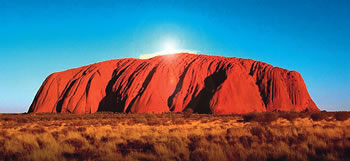Whose Law Rules?

Fr Kevin Bates sm
Every culture develops rituals that express the deeper and often unspoken meanings behind their existence. Along with the rituals, they also have sacred places in which only certain behaviours are permitted and only certain people are allowed to participate. As well, only certain designated people are permitted to enter these sacred places. We have learnt a lot in recent times about the importance of such rituals and places in the life of a community. We’ve also learnt how important it is for those who are not part of a community, to step back and pay respect to the rituals and sacred places of others.
Balancing a sense of the sacred with a sense of intimacy is an ongoing task for the Church. Over the years, we have swung from what we might call an over-sacralised practice, where everything to do with our Mass and Sacraments was untouchable, to an overly casual approach in which all sense of sacred space and ritual can be lost.
At each of these extremes we lose touch with something precious and are the poorer for it. Often, if we are not part of a culture, we will not understand the sacred nature of ritual and place belonging to that culture. We may even find some cultural practices amusing when viewed through our own foreign eyes.
During my recent journeying, I visited three places that are considered somewhat sacred by their custodians, Uluru in Central Australia, the Melbourne Cricket Ground, and Lord’s Cricket Ground in London.
Around the time I visited Uluru, the Australian Government decided that it would not accede to the desires of the local Aboriginal custodians who had asked that the climbing of Uluru be discontinued. The Government decided that such a prohibition would affect our tourist dollar!
The sacredness of this place is apparently lost on our political leaders. The need for adventure takes precedence over the need for respect. If I am climbing Uluru, my focus will tend to be not on the beauty of the place, its sacred stories, its history in the life of the local people, I will be focussed more on my own climbing prowess, my safety and my dietary and sanitary needs which I will no doubt satisfy while climbing on this sacred space.
Meanwhile, at the MCG, visitors are allowed to put a tentative toe on the edge of the ‘hallowed turf’ and no more. No one bats an eyelid or questions the regulation which prevents us from invading this ‘sacred space,’ reserved mostly for young men who leap around several times a week seeking to control a moving ball of one shape or another!
The same was the case at Lord’s, home to the most quirky of cricketing cultures, with its wealth of cricketing stories and strange rules about who can and can’t walk, photograph or pause in certain places.
To walk on the sacred turf of Lord’s is totally out of the question unless one is qualified to chase, hit or bowl with the requisite level of skill! No one batted an eyelid or raised a word in protest at this law. Regardless of how silly, how thoughtless or how disrespectful the rules of the dominant culture are, they are the ones that generally hold sway.

In our own personal and family worlds, our sacred spaces and rituals hold important meanings. Just as we hold on to these, preserve and respect them, it is good that we notice the places and practices that give meaning to other lives and other peoples, and that we pay them the respect they deserve.
If we listen openly to the stories and wisdom of other cultures, you never know how our own lives may be enriched and our own sense of what is truly sacred may be deepened and refined. What is holy to another people may even become holy for us too and something more than a tourist attraction to be clambered over and photographed!
 Entries(RSS)
Entries(RSS)